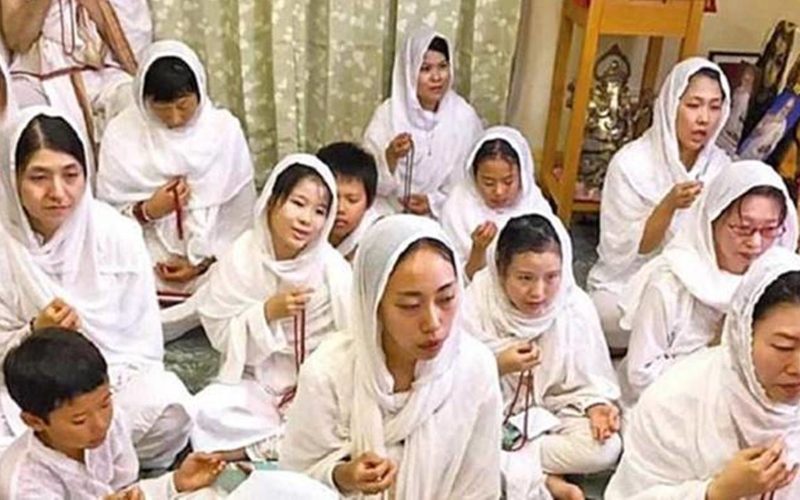Churushi Miyazawa, a Japanese woman, visited India as a traveler back in 2005. She happened to meet Gachadhipati Swargiya Jayantsen Suriswarji Maharaj Saheb during her visit to India, who captivated her with the preachings of Jainism and thus, Churushi then began a new life and became Tulsi.
She gave up on materialistic comforts and opted to live life minimally just like a Jain monk. “My guru entrusted me with a bigger task: To spread Jainism across Japan. Every month, since then I have been traveling to India four to five times a year with hundreds of Japanese who are ready to embrace Jainism,” Tulsi told TOI.

The town of Naganoken in Japan is one of the popular tourist attractions in Japan as it is home to the seventh-century Zenko-Ji temple with an idol of Lord Buddha not discoverable by many. The town has now become a hub for people in Japan who wish to convert to Jainism.
Every year thousands of Japanese people visit Naganoken to embrace Jainism and turn to monkhood. They wrap themselves in a white loincloth, chant the Navkar Mantra, eat before sunset, drink warm water and meditate for hours at derasars in Japan (Jain temple).
In fact, thousands of Japanese visit Tharad in northern Gujarat to spend a week there with the disciples of Jayant Sensuriswarji Maharaj. “There are a number of Japanese coming here in large numbers. They follow all our rules, pray with us, eat Satvik food before the sun sets, mediate and go back home to follow the same lifestyle we induct them into,” said Nityasen Suriswarji Maharaj Saheb.

Last month around 2500 Japanese Jains visited Gujarat, another lot of a few hundred more Japanese are set to visit the place next week. “A new temple is being planned in Japan and now we are told there are more than 5,000 families are newly inducted into Jainism,” Nityasen added.
The newly transformed Japanese Jains also celebrate the eight-day-long holy festival of Paryushan with enthusiasm. “There they fast for eight days (atthai) by merely consuming warm water. Even children follow Paryushan and keep fasts for a day or two,” says Tusi. “The appeal of ahimsa or non-violence propounded by Jainism has found a connection with all of us,” she added.
However, the Japanese people who are transforming into Jains mostly were the followers of Zen which is a school of Mahayana Buddhism that originated in China during the Tang dynasty. This was popularly known as Chan School which later branched into various schools.
What are your thoughts about the journey of Japanese from Zen to Jain? Tell us!




